Crowned one of the “most beautiful small towns in America,” Jim Thorpe could also be called one of the most fascinating historical small towns in the country.
Visitors to this eastern Pennsylvania town will be charmed by its exquisite Victorian mansions, quaint shops, and old-fashioned passenger railroad. Yet Jim Thorpe is sure to thrill the history lover with fiction-like melodrama and an intriguing mystery.

Originally founded in 1818 as Mauch Chunk (pronounced Mock Chunk), meaning “bear mountain” in the native Lenni Lenape language, the small boroughs of Mauch Chunk and East Mauch Chunk merged and adopted the name Jim Thorpe in 1954.
A Famous Namesake
Intended to attract tourism, the town’s new name honored the first Native American to win an Olympic gold medal for the United States. Though he likely never visited Mauch Chunk, his third wife, Patricia Thorpe, in a controversial move, arranged to have his body memorialized in this town.
James Francis Thorpe, a member of the Thunder Clan of the Sac and Fox tribe, was fittingly called Wa-tho-huck, meaning “Bright Path.” Born in May 1887 or 1888 in Oklahoma Territory, he was a direct descendant of the famous warrior Chief Black Hawk. But it was his athletic skills that made Jim Thorpe famous. When he attended Carlisle Indian School, a vocational school in Pennsylvania, he excelled in a diverse range of sports, including basketball, billiards, bowling, figure skating, golf, gymnastics, handball, hockey, lacrosse, rowing, swimming, tennis, and track and field. He even won a dance competition.
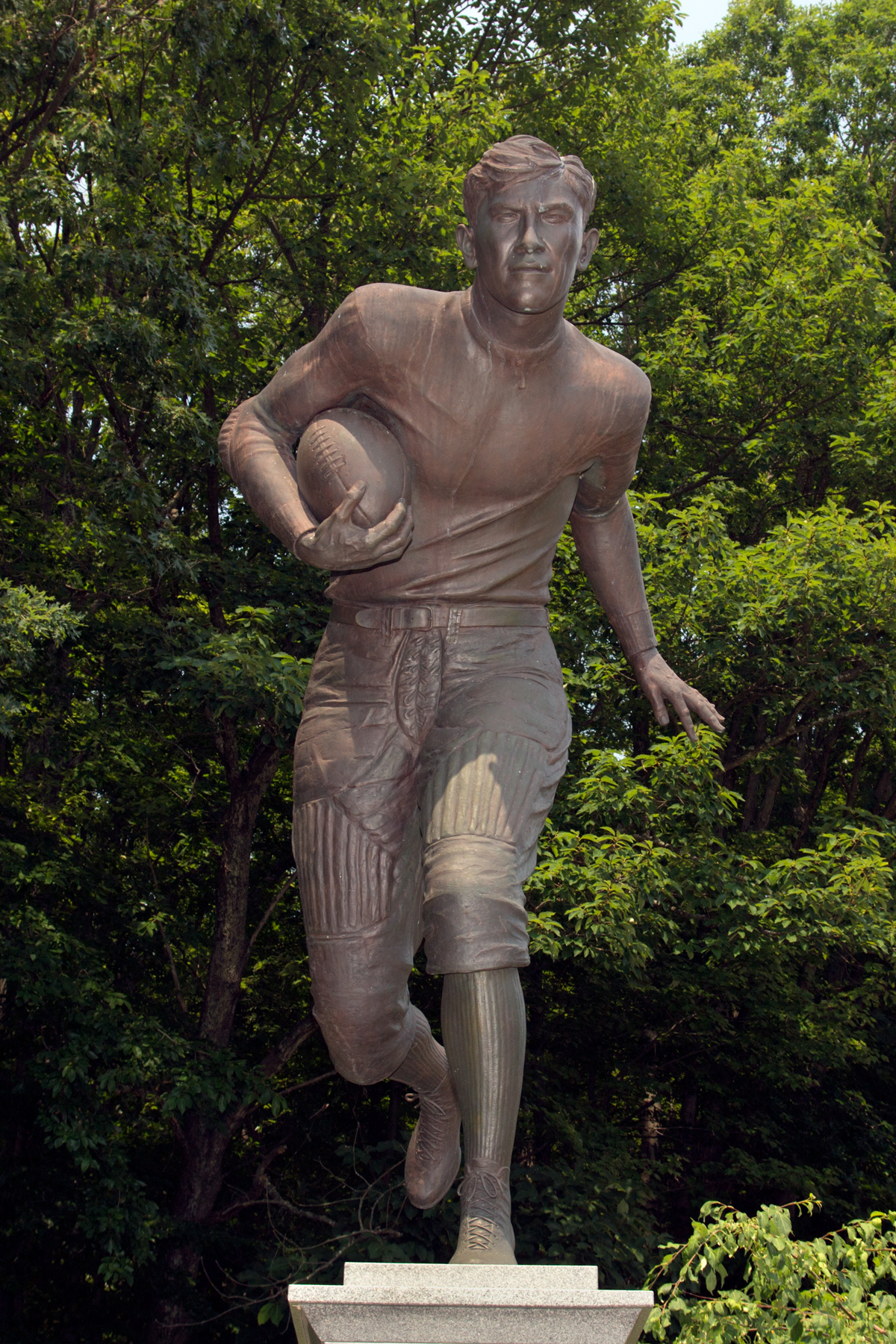
But, he was best known for his football skills. After his team handily beat the No. 1 ranked Army team at West Point, Army’s left halfback, Cadet Dwight D. Eisenhower, described Thorpe: “He was able to do everything anyone else could, but he could do it better. There was no one like him in the world.”
His accomplishments were numerous. He played baseball for the National League champion New York Giants and football for the world champion Canton Bulldogs. He was the first president of the American Professional Football Association, the forerunner to the National Football League.
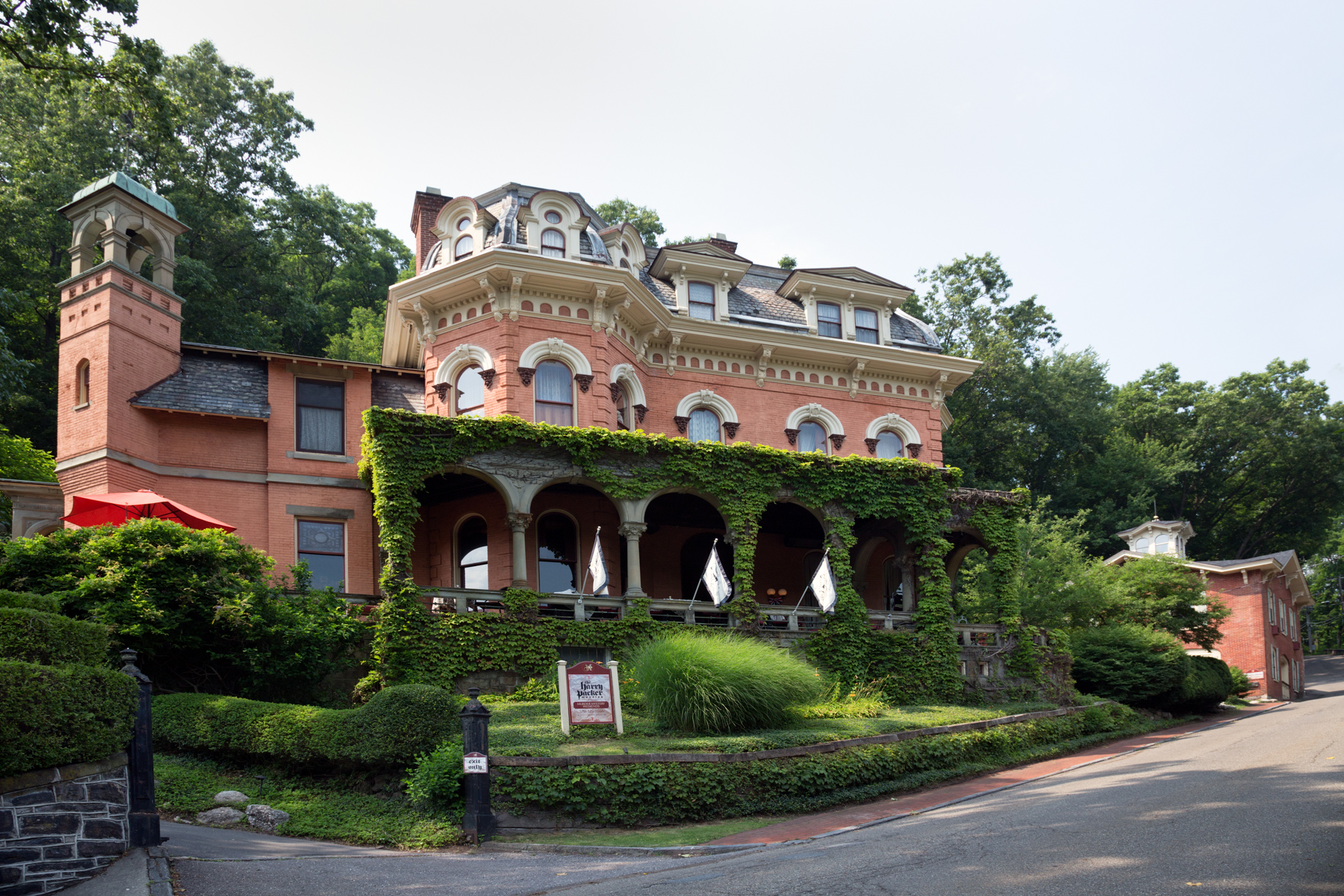
One of Thorpe’s greatest and most famous achievements was during the 1912 Olympics. He spectacularly won the five-event pentathlon and the 10-event decathlon by wide margins over his competitors. The king of Sweden, Gustav V, presented the gold medals, proclaiming, “Sir, you are the greatest athlete in the world!”
A Wealth of History, a History of Wealth
Beyond the famous namesake, the town of Jim Thorpe has a wealth of history. It also has a history of wealth, including millionaires whose legacies are still seen in the opulence of its Victorian mansions.
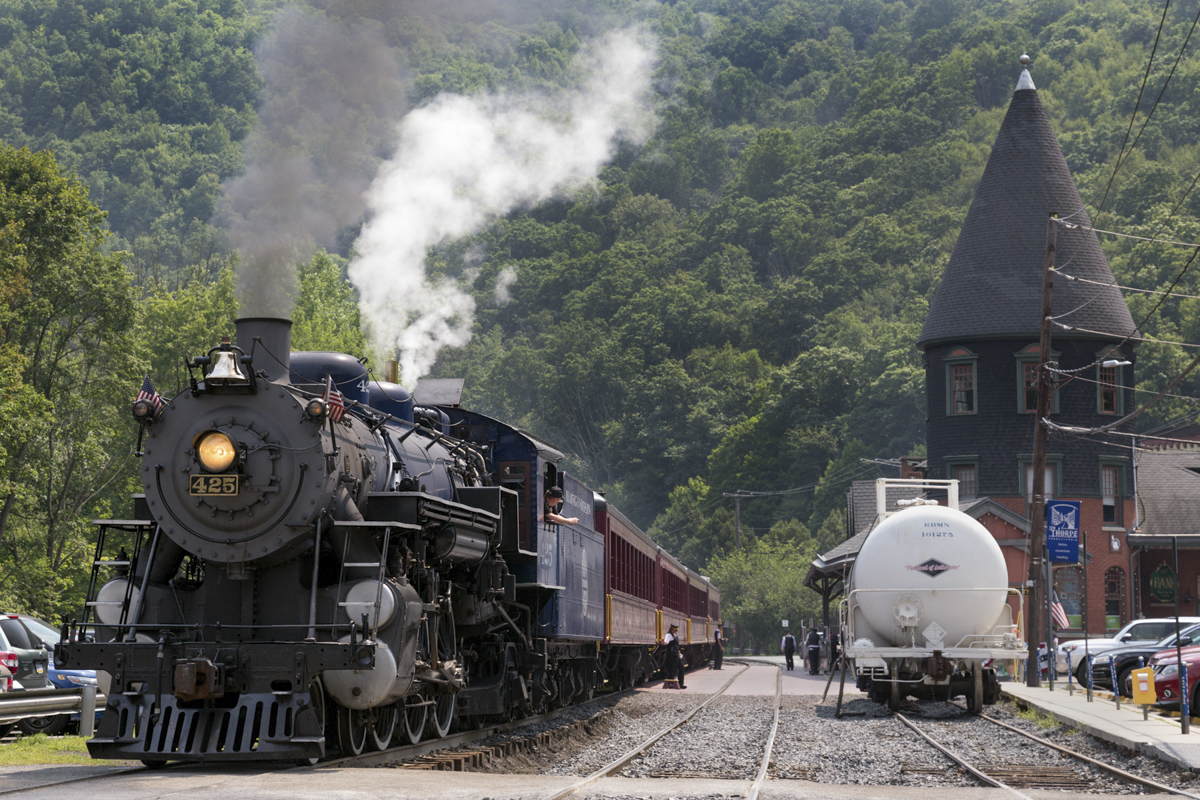
The town was founded when the Lehigh Coal & Navigation Company, headed by Josiah White, began work on the Lehigh River to transport coal. Along with business partner Erskine Hazard, White created the 49-lock ascending and descending Lehigh Canal, a civil engineering feat of its time. They also opened the Mauch Chunk Switchback Railway to transport coal from the mines. By 1873, this gravity-powered railway was converted to passenger use and became one of the most popular tourist attractions in the country. President Ulysses S. Grant and Thomas Edison were two of the famous adventurers to brave the hair-raising ride through the mountains. The Switchback predates the Coney Island, New York, roller coaster known as the Switchback Gravity Pleasure Railway by 11 years.
The economic boom generated by the coal company interested carpenter and farmer Asa Packer, who moved to the town and used his carpentry skills to build canal boats. Over time, he believed there was a better way to transport the coal. He risked financial ruin when he purchased nearly all the controlling stock for an unfinished railroad. Later, the line became the prosperous Lehigh Valley Railroad.
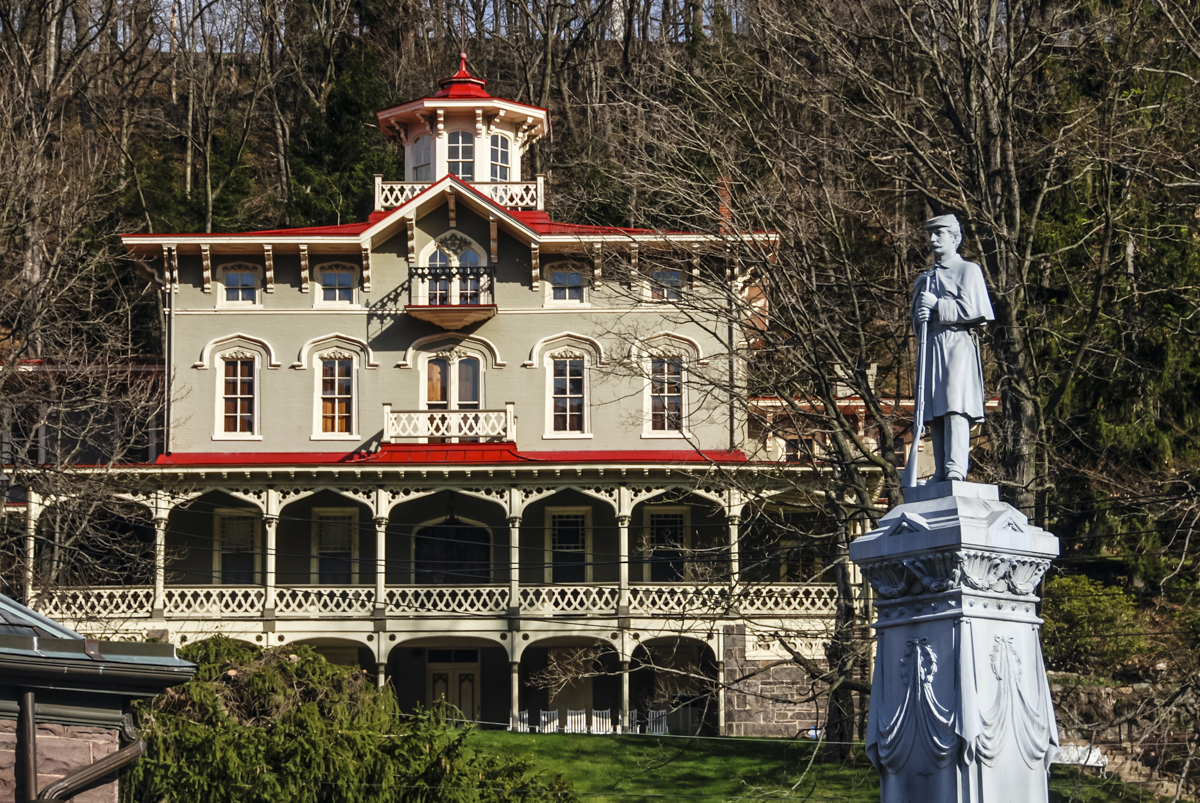
A philanthropist, he founded Lehigh University, donated millions of dollars, and left an estate valued over $54 million. Today, visitors can tour the family’s elegant three-story, 18-room Italianate villa, complete with original contents. Approaching the mansion, visitors pass Gothic window arches and gingerbread trefoil motifs trimming the verandah. Inside, guests are treated to fine woodcarvings by European artisans and glistening stained-glass windows. Designated a National Historic Landmark, the mansion sits on a hill overlooking a picturesque view of Jim Thorpe.
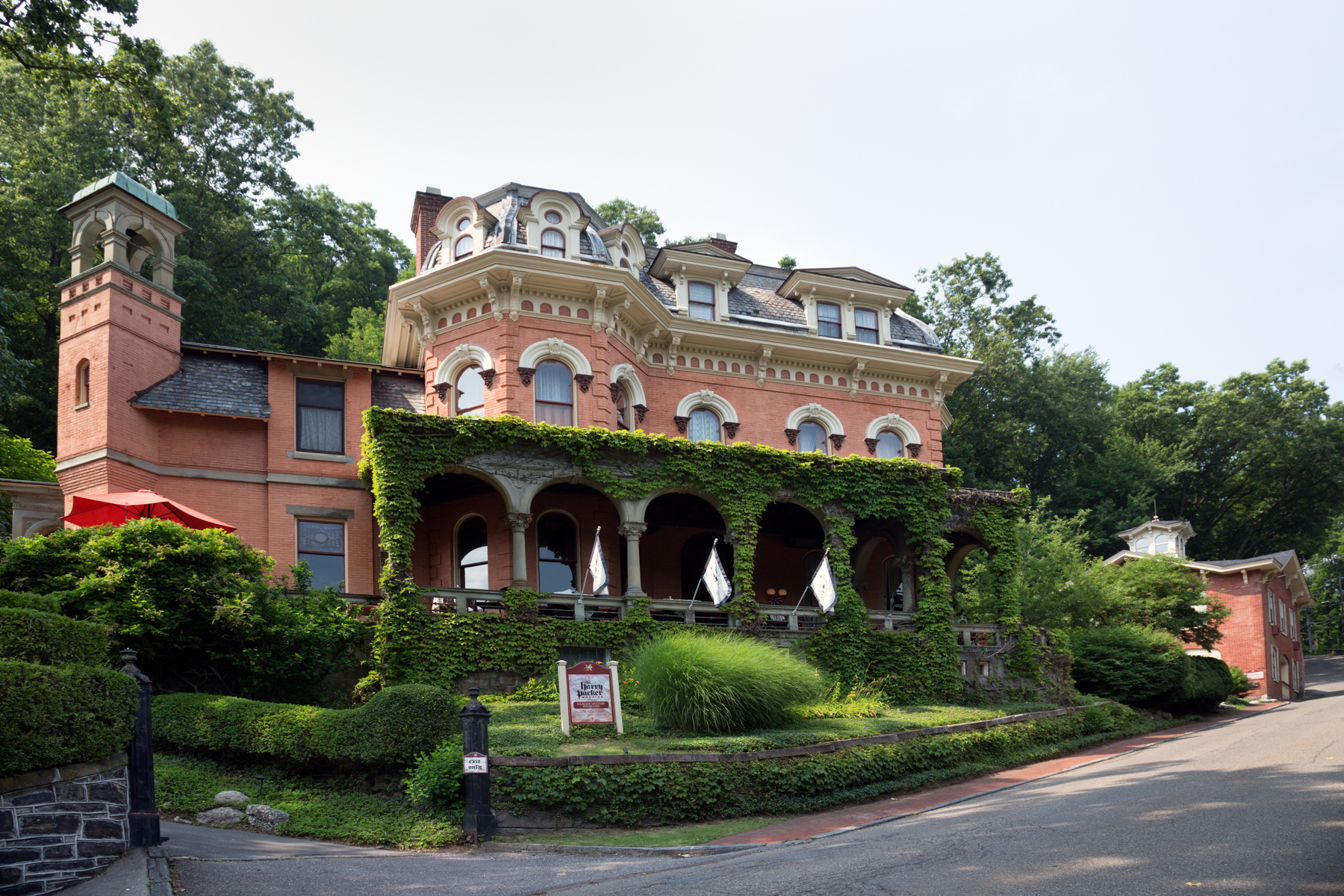
Nearby is the former home of Asa’s son, Harry Packer. The mansion is currently a historic luxury inn decorated in the elegance of the Victorian era. Surprisingly, it has a most unusual claim to fame. The exterior of the home was the inspiration for Walt Disney World’s “Haunted Mansion.”
Secret Society
On another hill in Jim Thorpe is a supernatural mystery. The story reads like fiction but is true.
It begins in the coal mines. The same coal mines that brought great wealth to the region also brought hardship and danger. Conditions in the mines were terrible. Boys as young as 6 years old worked picking slate. Families lived in poor company-owned homes. They were paid in company money, which was worthless except in company stores. Foremen frequently abused workers.
A secret organization retaliated against the coal and railroad companies. Between 1861 and 1875, there were arsons, violent assaults, and murders blamed on the secretive Irish-American group known as the Molly Maguires. A Pinkerton detective infiltrated the group, befriended the members, and then betrayed them. Seven Irish coal miners proclaimed their innocence but were hanged in the Old Jail. But that was not the end of this story. Before his hanging, one miner placed his dirty hand on the wall, saying, “This handprint will remain as proof of my innocence.” Despite washing, painting, and replastering, the handprint has remained to this day.
Plenty to Do
Today, Jim Thorpe is a charming small town. Many of the Victorian buildings have been renovated and turned into shops, eateries, museums, and galleries. Adventurers enjoy the walkable downtown, biking and hiking through scenic Lehigh Gorge, or whitewater rafting.
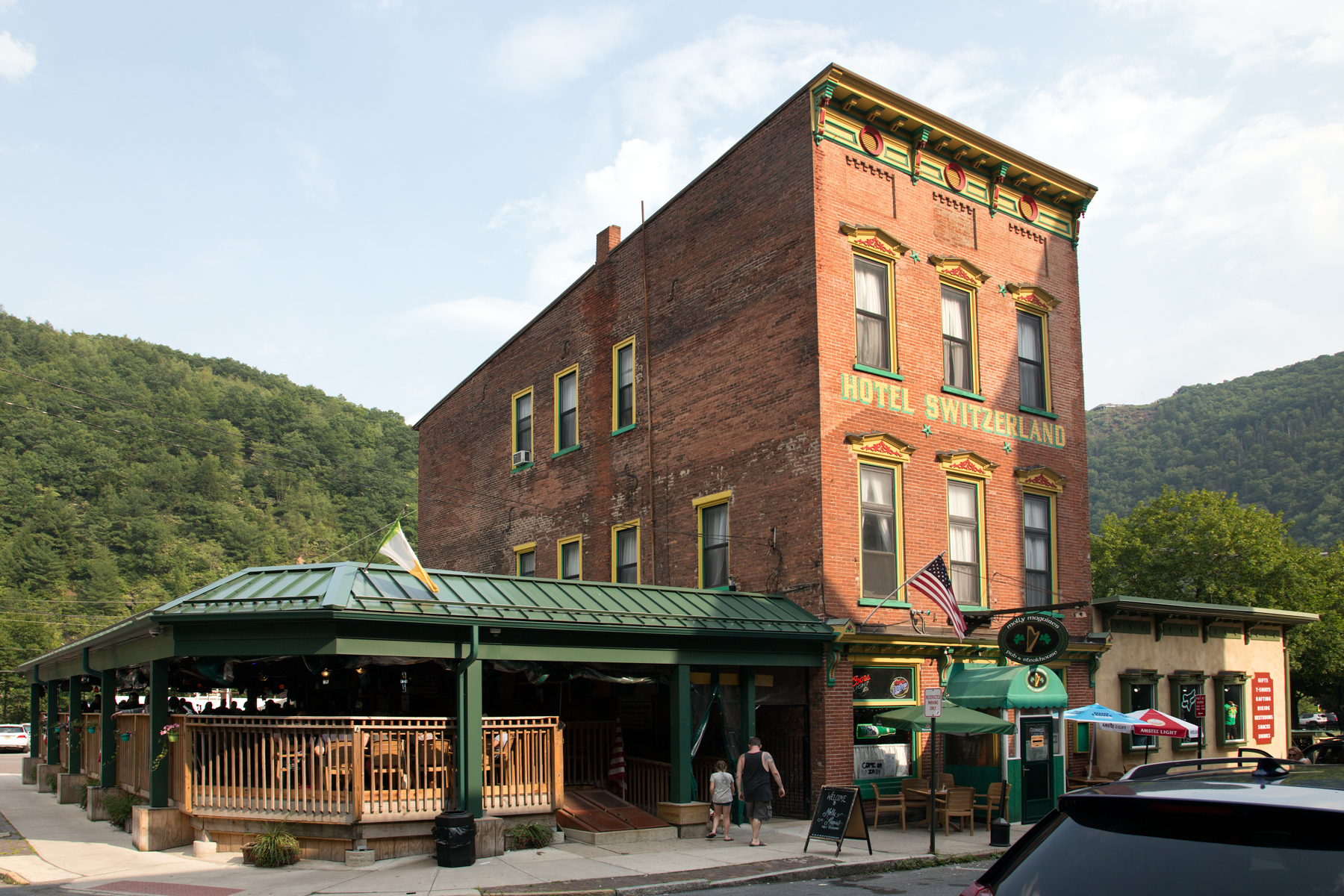
Theater lovers attend live performances at the historic Mauch Chunk Opera House, one of America’s oldest vaudeville theaters.
Delightful events lure visitors year-round. There’s a Running Festival with 7-mile, half-marathon, and full marathon options. Winterfest brings horse-drawn carriage rides, ice carvings, and a luminary stroll, while autumn brings the Fall Foliage Festival, featuring arts, crafts, children’s activities, and ghost tours. It’s the perfect time to enter the Old Jail Museum and see the mysterious handprint.
Afterward, visit the Molly Maguires Pub & Steakhouse on Hazard Square. Enjoy a meal while relaxing on the outdoor heated deck. Listen to the nearby 1893 courthouse clock tower chime, and watch the Lehigh Gorge Scenic Railway depart the historic downtown station. Riders on the narrated round trip are treated to views of Pennsylvania’s woodlands. In autumn, a tour is a visual feast of colorful foliage.
Be sure to wander to Josiah White Park and see a 15,100-pound piece of anthracite coal. The enormous black diamond is a monument to Josiah White and Erskine Hazard. Have a seat in the quaint gazebo overlooking the park. Then, with the setting sun, watch the strings of lights sparkle as they decorate the nostalgic train station. Jim Thorpe truly is a charming small town with an extraordinary wealth of history.













